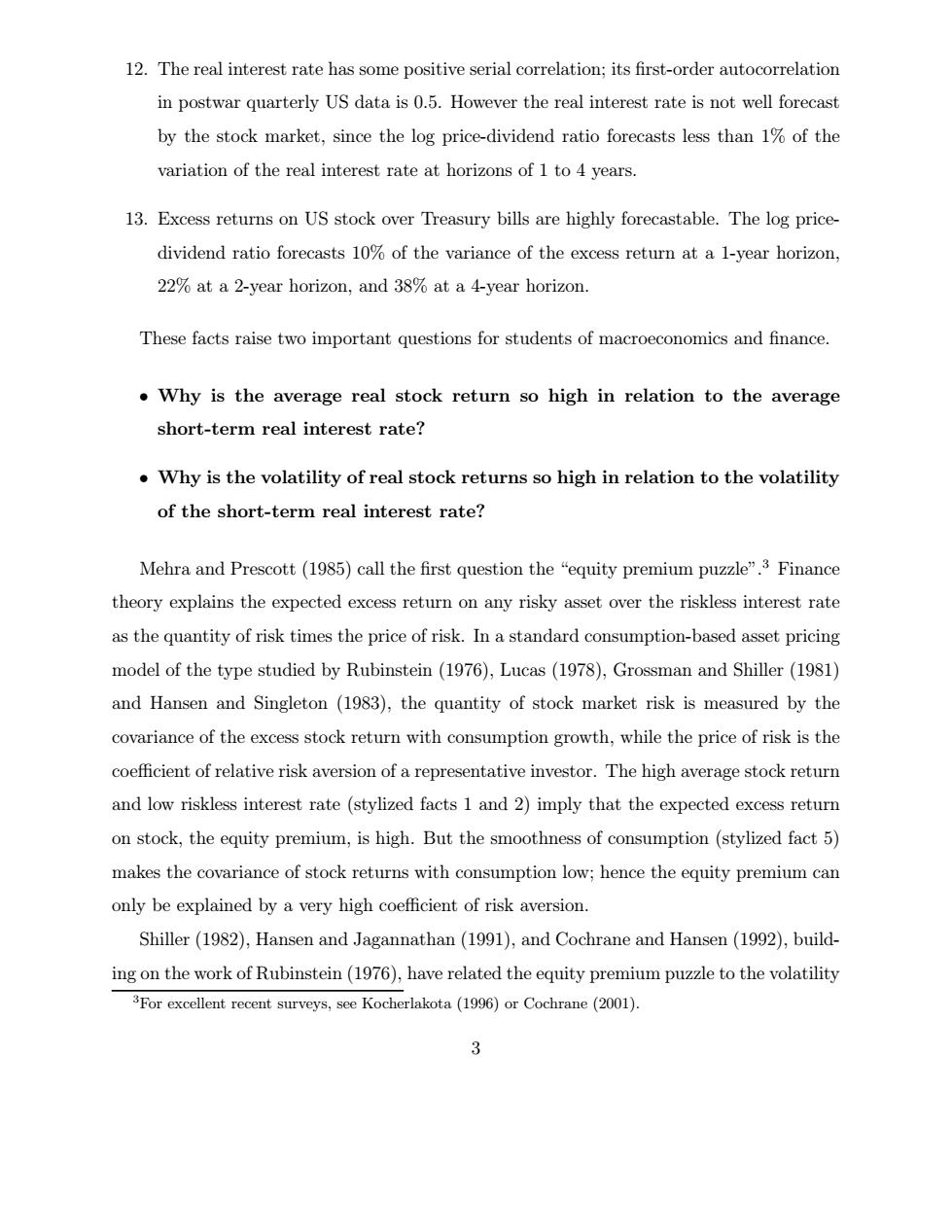正在加载图片...

12.The real interest rate has some positive serial correlation;its first-order autocorrelation in postwar quarterly US data is 0.5.However the real interest rate is not well forecast by the stock market,since the log price-dividend ratio forecasts less than 1%of the variation of the real interest rate at horizons of 1 to 4 years. 13.Excess returns on US stock over Treasury bills are highly forecastable.The log price- dividend ratio forecasts 10%of the variance of the excess return at a 1-year horizon, 22%at a 2-year horizon,and 38%at a 4-year horizon. These facts raise two important questions for students of macroeconomics and finance. Why is the average real stock return so high in relation to the average short-term real interest rate? Why is the volatility of real stock returns so high in relation to the volatility of the short-term real interest rate? Mehra and Prescott(1985)call the first question the "equity premium puzzle".3 Finance theory explains the expected excess return on any risky asset over the riskless interest rate as the quantity of risk times the price of risk.In a standard consumption-based asset pricing model of the type studied by Rubinstein (1976),Lucas(1978),Grossman and Shiller (1981) and Hansen and Singleton (1983),the quantity of stock market risk is measured by the covariance of the excess stock return with consumption growth,while the price of risk is the coefficient of relative risk aversion of a representative investor.The high average stock return and low riskless interest rate (stylized facts 1 and 2)imply that the expected excess return on stock,the equity premium,is high.But the smoothness of consumption (stylized fact 5) makes the covariance of stock returns with consumption low;hence the equity premium can only be explained by a very high coefficient of risk aversion. Shiller(1982),Hansen and Jagannathan (1991),and Cochrane and Hansen (1992),build- ing on the work of Rubinstein(1976),have related the equity premium puzzle to the volatility 3For excellent recent surveys,see Kocherlakota(1996)or Cochrane(2001). 3
> )
$
!" 8 ?
( (
#
%
)
5
2
6 .'
!"
(
%
%
)
5
'
)
# 5 )
# 645 2)
$
*
@
A148B
$
C
$
D
'
'
'
(
(
$ (
( -
)
%
0
A139B# :
A134B# + "
A14B ?
"%
A146B#
$
( (
(
'
(
%
#
(
E
(
%
%
(
(
A
B
'
'
(#
$
# % =
A
8B (
(
>
$
'
%
E
(
"
A14B# ?
% A11B#
?
A11B#
) %
( 0
A139B#
$
? A ++
B- +<
C#**'D - C"!!#D 6�����������������������������������������������������������������������������������������������������������������������������������������������������������������������������������